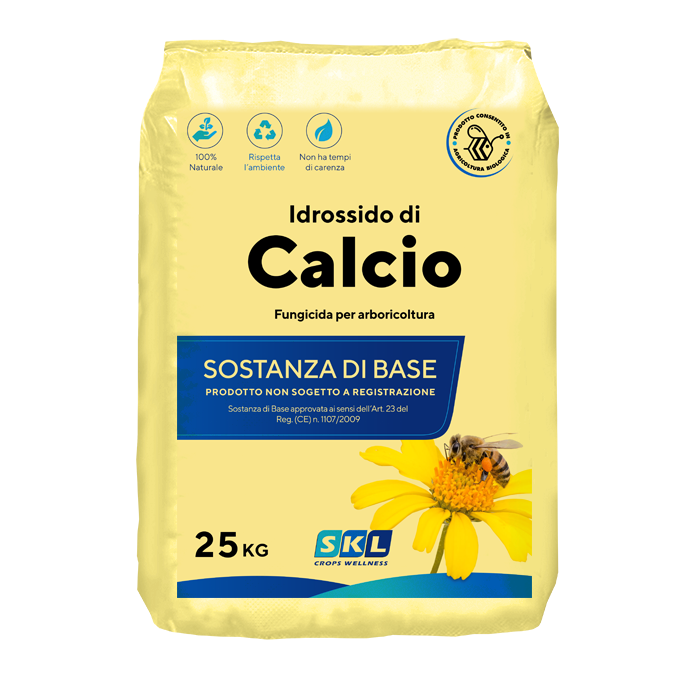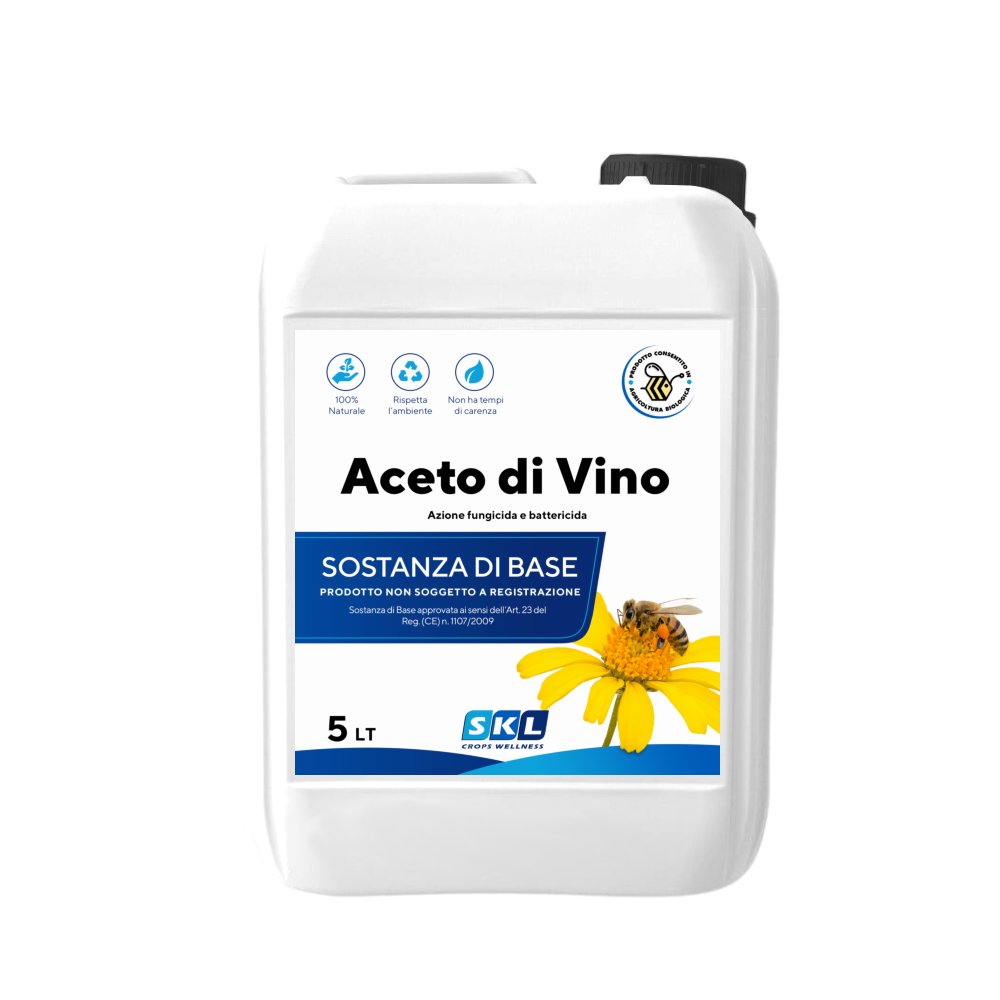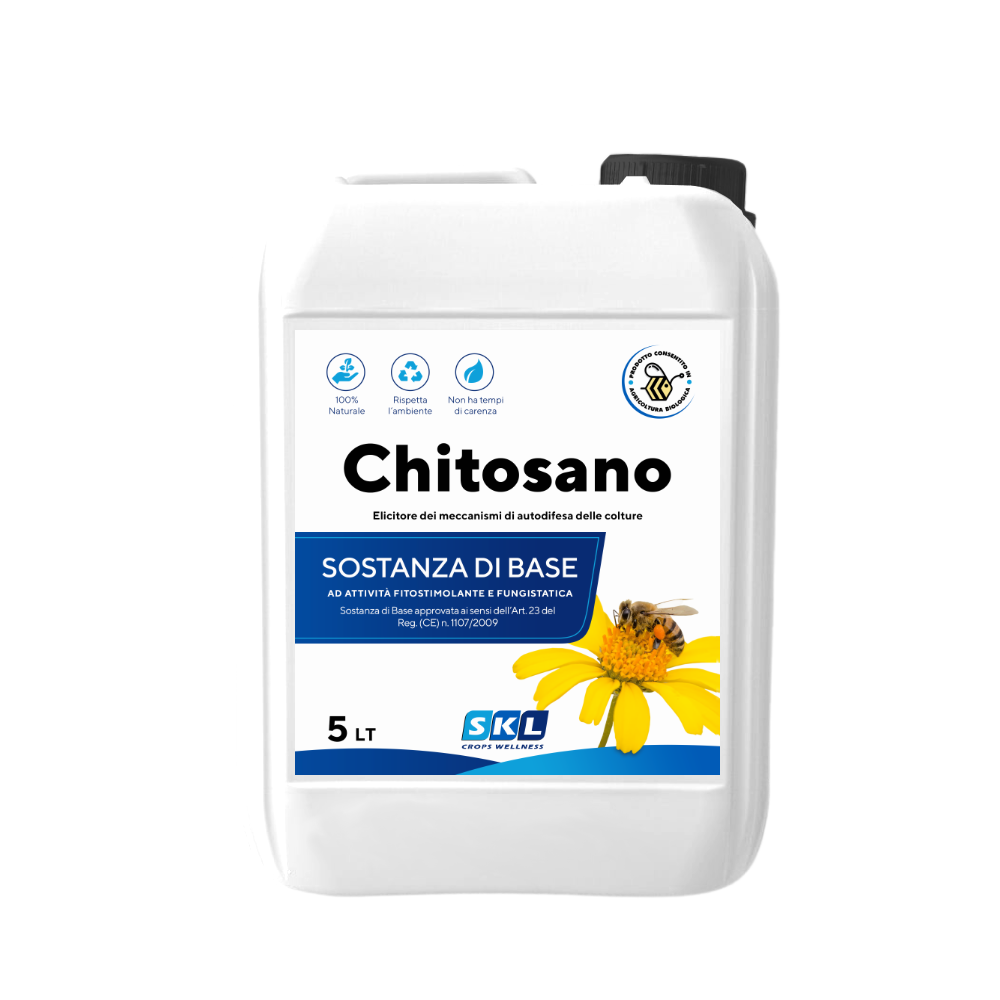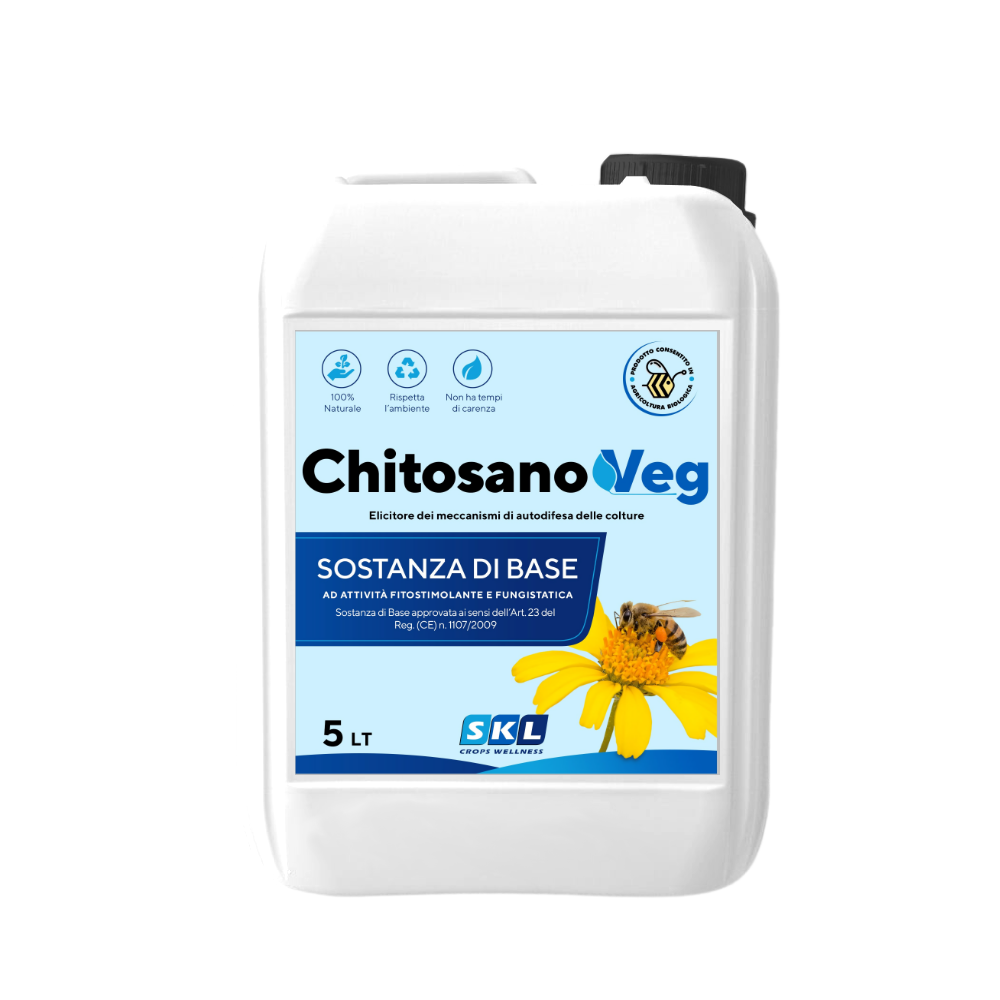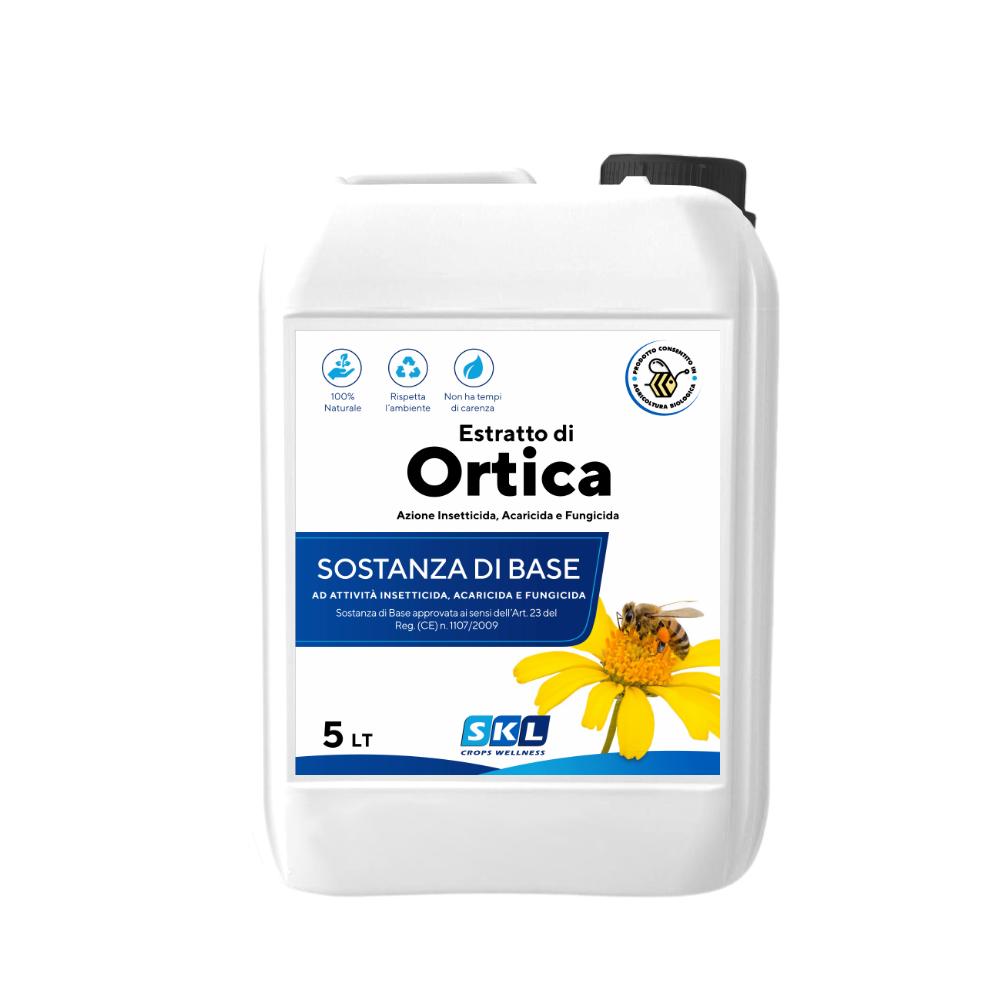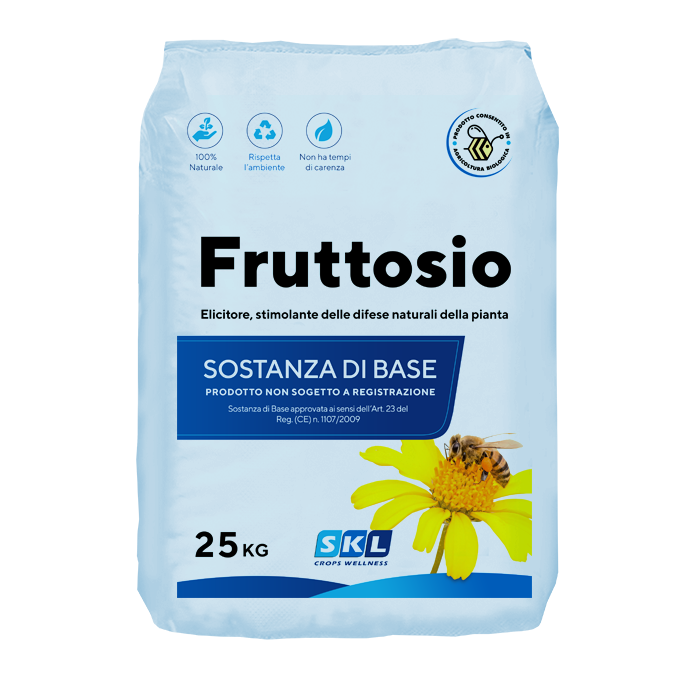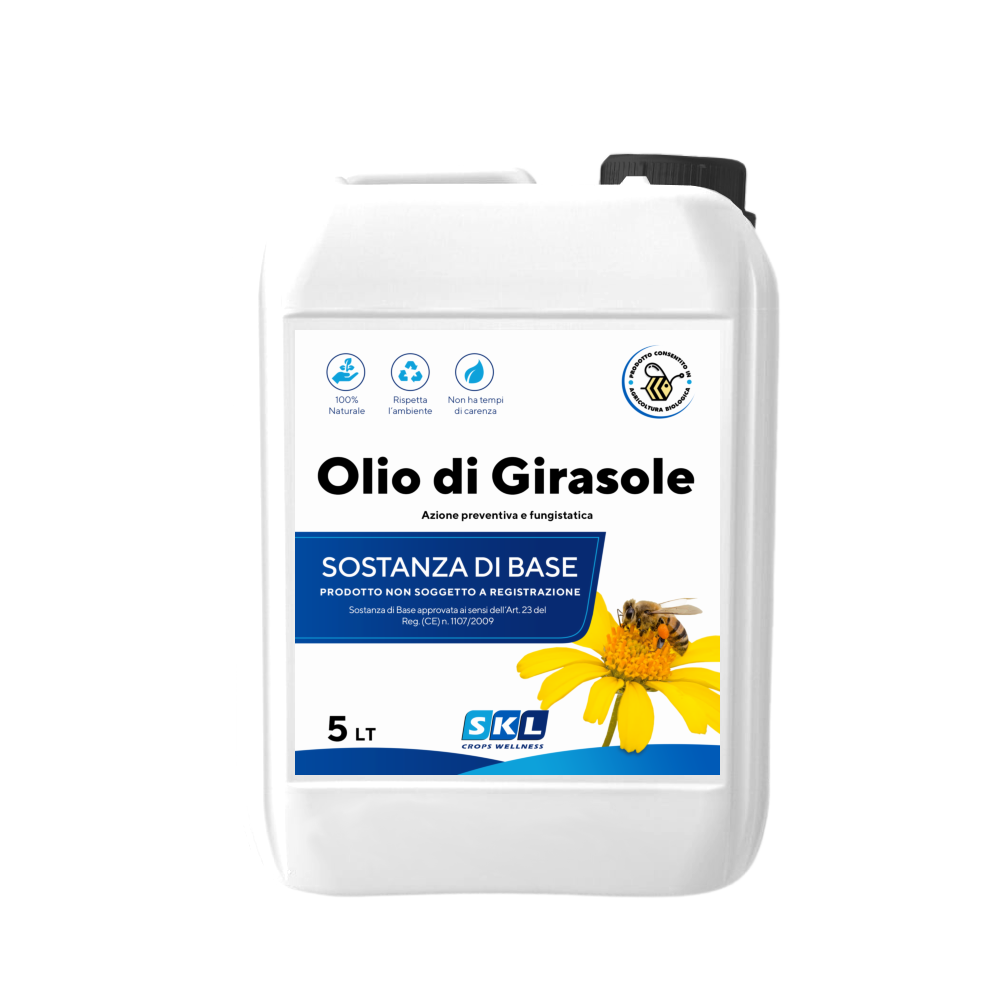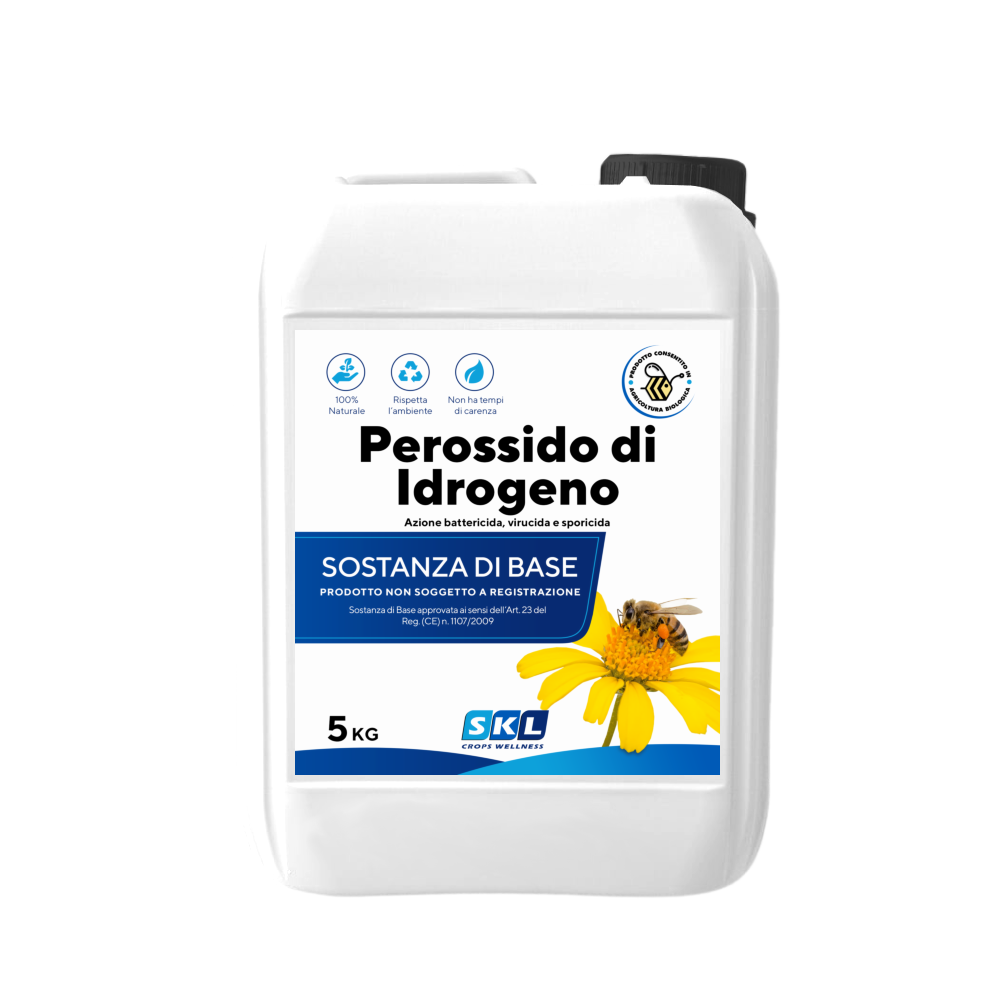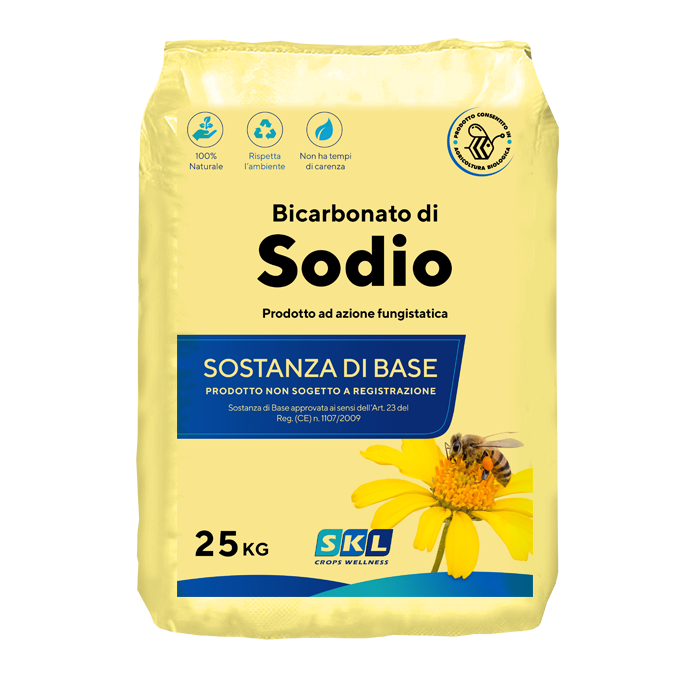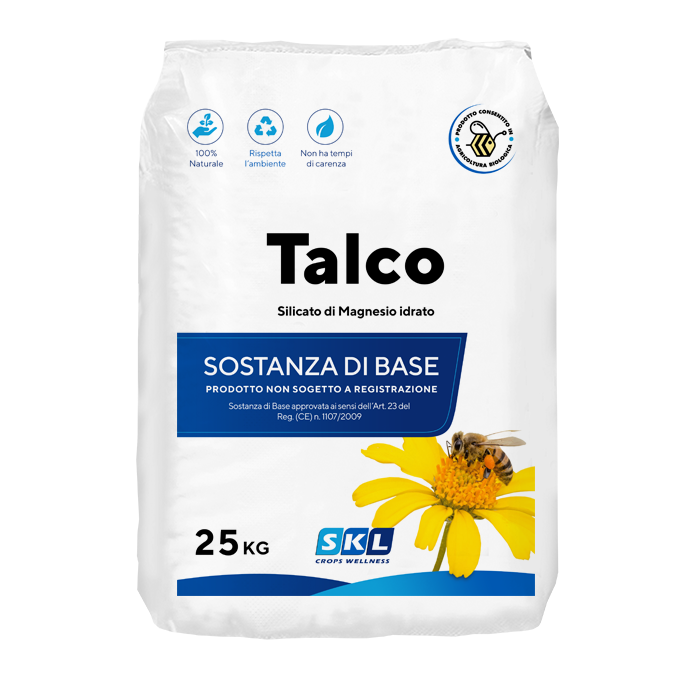Description
L'Calcium hydroxide, also known as slaked lime, Ca(OH)2, is obtained from the interaction between water and Calcium Oxide. If mixed with water, a small part of it dissolves, forming a solution known as "limewater".
The Calcium hydroxide is used for various purposes: in the formulation of construction materials, paper, and drinking water treatment, in agriculture as an amendment, in food it is regulated as E526 under Regulation (EU) No 2008/13336, relating to a list of European Union food additives, enzymes, flavors, and nutrients.
The Calcium hydroxide is considered essential in Organic Agriculture, for its effectiveness against pathogenic fungi such as Neonectria galligena.
Many cultivated plants grow better with a pH of about 6 - 6.5. However, over time, soils tend to become more acidic.
Slaked lime is used to increase soil pH, as it reacts with acids and therefore increases pH.
Based on the currently available information, it has been established that for Calcium hydroxide, the following manufacturing impurities are of toxicological or environmental interest:
- Barium: content must not exceed 300 mg/kg
- Fluoride: content must not exceed 50 mg/kg
- Arsenic: content must not exceed 3 mg/kg
- Lead: content must not exceed 2 mg/kg
EFSA authorizes the use as a basic substance with fungicidal action against Neonectria galligena (pome and stone fruits).
Dosage
| Through Sprinkler | ||
| Crop | Adversity | Dosage |
| Pome fruits | Apple canker Neonectria galligena |
25-50 kg/ha per treatment From 2 to 7 applications from leaf fall in October until December |
| Spray Application | ||
| Crop | Adversity | Dosage |
| Pome and Stone fruits | Neonectria galligena and other phytopathologies | 15-25 kg/ha per treatment From 2 to 7 applications from leaf fall in October until December |
| On pruning wounds and old tumors | ||
| Crop | Adversity | Dosage |
| Pome and Stone fruits | Neonectria galligena and other phytopathologies | 150 kg per treatment from winter until March |

